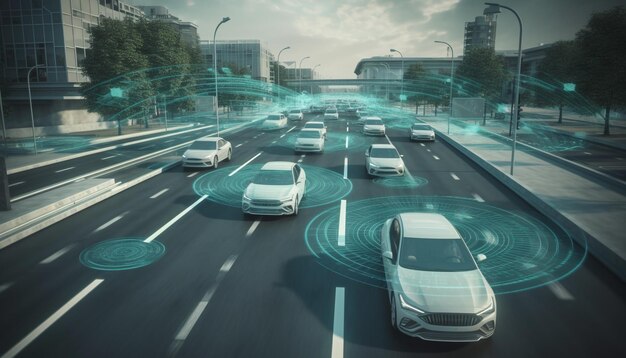
Sponsored article
Autonomous vehicles are quickly becoming a pivotal force in reshaping urban mobility. As self-driving technology continues to advance, cities are witnessing a transformation in how people and goods move. These vehicles promise to ease traffic woes, enhance road safety, and offer environmentally friendly solutions. In this article, we explore the profound impacts of autonomous vehicles on city life, delving into their potential to make urban areas more efficient, safe, and sustainable.
The integration of autonomous vehicles into urban areas holds significant potential to alleviate traffic congestion, a persistent issue that plagues cities around the world. One key advantage of autonomous vehicles is their ability to improve traffic flow by maintaining optimal speeds and precise spacing between vehicles. This reduces the instances of stop-and-go traffic that often lead to gridlock. Autonomous vehicles are equipped with advanced sensors and technologies that enable them to communicate with each other and with smart traffic management systems. By leveraging real-time data, these vehicles can make informed decisions to prevent bottlenecks, thereby enhancing the overall efficiency of commuting in urban environments.
Moreover, autonomous vehicles significantly contribute to optimized route planning. Unlike human drivers, these vehicles can analyze traffic patterns and select routes that minimize travel time and avoid congestion hotspots. This ability not only helps in easing traffic congestion but also contributes to sustainable urban mobility by reducing fuel consumption and emissions. Additionally, the deployment of autonomous vehicles in urban areas encourages the development of infrastructure enhancements such as smart traffic management systems that coordinate traffic lights and lane usage for smoother vehicular flow. Consequently, the widespread adoption of autonomous vehicles promises a transformative impact on urban mobility and the systematic reduction of traffic congestion, paving the way for more efficient and livable cities.
Autonomous vehicles represent a transformative leap forward in the enhancement of public safety by harnessing cutting-edge autonomous technology to significantly reduce road accidents. With a suite of advanced sensors, including lidar, radar, and cameras, these vehicles possess an unparalleled ability to monitor their surroundings in real time, ensuring a new echelon of road safety. By continuously scanning the environment, autonomous vehicles can detect potential hazards more accurately and rapidly than human drivers, effectively minimizing the human errors often responsible for roadway mishaps.
This technology facilitates critical decisions on the fly, such as automatic braking, lane-keeping assistance, and adaptive speed control, further contributing to accident reduction. In urban settings, where traditional driving can be fraught with distractions and complexities, autonomous vehicles provide a consistent and reliable means of transportation. As they communicate with each other and the urban infrastructure, these smart vehicles hold the promise of a future where seamless and safer travel is the norm, revolutionizing urban mobility.
One of the most significant environmental benefits of self-driving cars is their potential to dramatically reduce emissions and contribute to eco-friendly transportation solutions. These autonomous vehicles are engineered to optimize driving efficiency, which in turn minimizes fuel consumption and greenhouse gas emissions. By integrating cutting-edge technology with sustainable practices, self-driving cars promise to revolutionize urban mobility while mitigating the ecological impacts of traditional vehicles.
The environmental advantages of self-driving cars are numerous and include:
As autonomous vehicles become more prevalent, their role in creating sustainable urban environments will continue to grow, making self-driving cars a cornerstone of future-friendly urban transportation systems.